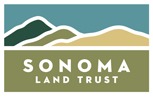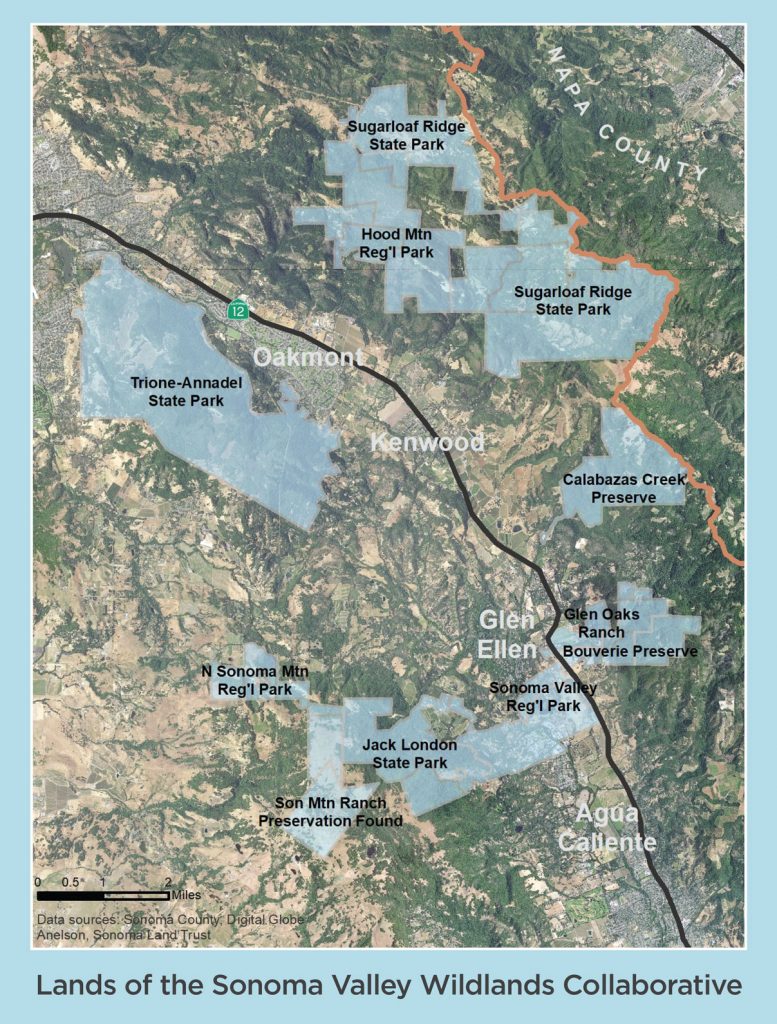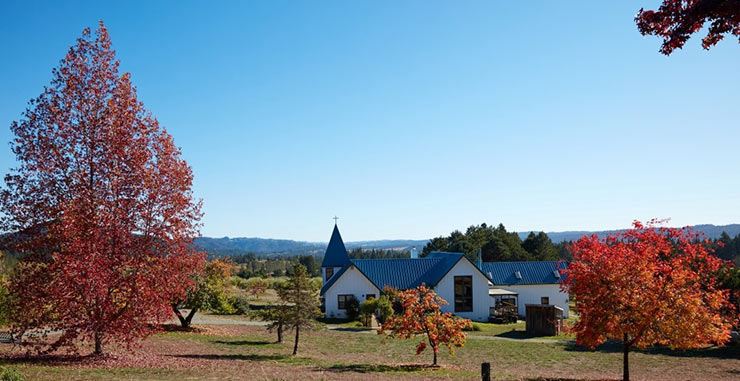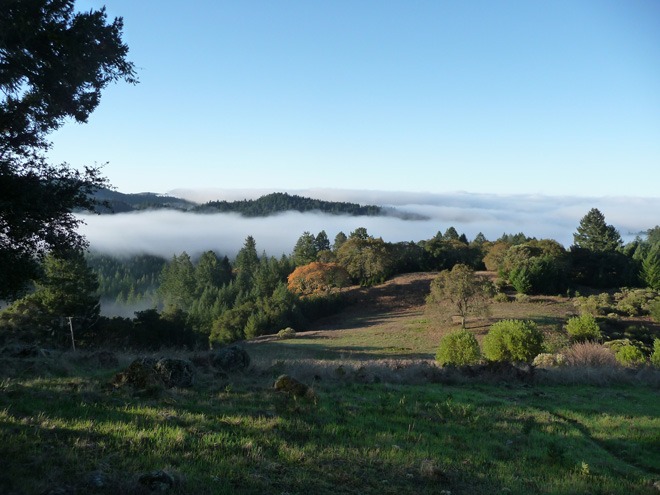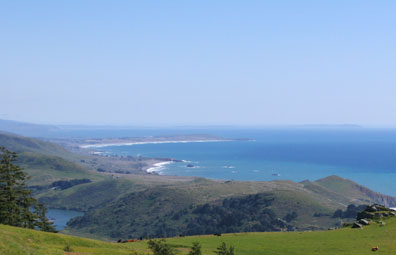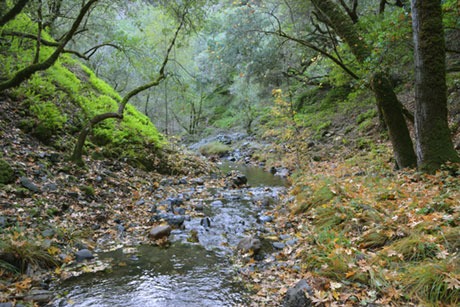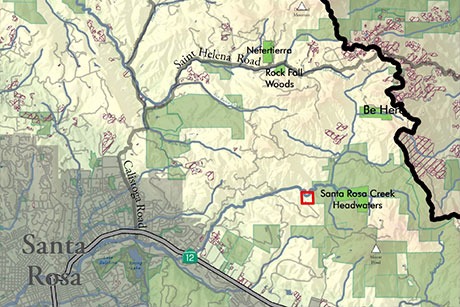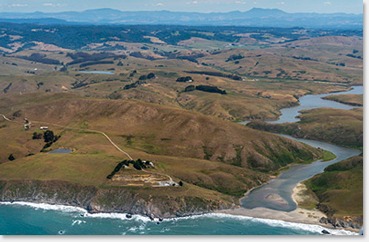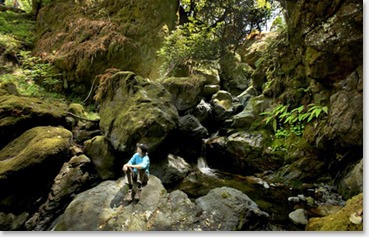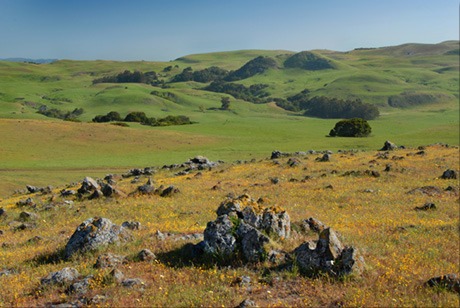Size of Tolay Lake Regional Park to double
SANTA ROSA, CALIF. — In November of 2007, Sonoma Land Trust purchased a 1,665-acre property in southern Sonoma County at risk of subdivision and vineyard development and named it Tolay Creek Ranch. The acquisition of Tolay Creek Ranch also completed the protection of a 7,500-acre wildlife corridor extending from the foothills of Sonoma Mountain to the bay. With sweeping views of San Francisco Bay, dazzling wildflower displays and plenty of space for hiking, the ranch was well suited to becoming a park — particularly since it is situated adjacent to 1,737-acre Tolay Lake Regional Park. Today, after nearly 10 years of resource assessments, habitat enhancement and creek restoration activities, Sonoma Land Trust has donated Tolay Creek Ranch to Sonoma County Regional Parks, a move that will double the size of Tolay Lake park.
“We acquired Tolay Creek Ranch to protect the land and restore the creek, and also to add the property to Tolay Lake Regional Park,” says Dave Koehler, Sonoma Land Trust executive director. “The ranch has a biologically and culturally rich landscape, and we are delighted that our Regional Parks partner will ensure that current and future generations will enjoy and care for this special place.”
Background information
Tolay Creek Ranch is located in southern Sonoma County between Lakeville Highway and Highway 121, north of Highway 37 and approximately eight miles south of Sonoma and seven miles southeast of Petaluma. It provides important wildlife connectivity to existing protected and natural lands, and unites Tolay Lake Regional Park with other protected lands downstream and along the bay, including Sonoma Land Trust’s Sears Point Wetland Restoration Project. Like neighboring Tolay Lake park, Tolay Creek Ranch was also a significant center of Native American life.
As part of the acquisition project in 2007, the Sonoma County Agricultural Preservation and Open Space District purchased a conservation easement over the property that prohibits all development and allows grazing, public access, habitat and riparian restoration, and park expansion.
“In acquiring this property, our vision has always been to restore the watershed and turn it over to Regional Parks to manage for resource protection and public enjoyment,” continues Koehler. “We are pleased to have accomplished that.”
Restoring the creek and ranchland
The ranch’s grasslands provide habitat for a variety of bird species, as well as deer, small mammals and mid-sized carnivores, like coyotes and bobcats. Containing three miles of Tolay Creek, it also provides important habitat for amphibians and waterfowl. Additionally, the ranch is home to protected species, such as burrowing owls and golden eagles, which visitors may be fortunate enough to see.
In the years leading to Sonoma Land Trust’s acquisition of the property, up to 40 homes and vineyards were proposed for the ranch’s hilltops. Instead, the last 10 years have seen a number of activities aimed at restoring the natural landscape. Several thousand students from the STRAW (Students and Teachers Restoring a Watershed) program, from kindergarten through high school, have planted thousands of native trees and plants along the banks of Tolay Creek to restore needed vegetation and halt erosion; and miles of new, wildlife-friendlier fencing have been added to the property to better manage cattle. The longtime rancher, who has grazed the property for more than 35 years, has worked with the Land Trust over the last decade to change the ranching practices to improve the grasslands and the water quality in Tolay Creek.
Future plans for the property and park
Sonoma Land Trust has conducted public hikes on the property several times a year and, once Tolay Lake Regional Park fully opens later this year, visitors will be able to enjoy it daily. Due to its relatively flat topography, an easy walk along the ridgetop provides hikers with expansive views of Petaluma, San Francisco Bay, Tolay Lake and Tolay Creek, and there are miles of trails for hardy hikers.
The property now comprising Tolay Lake Regional Park was purchased in 2005 by the Sonoma County Agricultural Preservation & Open Space District and transferred to Regional Parks. Since then, the park has been open weekends for hiking, birding, biking and horseback riding through a permit program.
Regional Parks is completing an extensive master-planning process to guide future recreational uses and conservation efforts for both the Tolay Lake and Tolay Creek properties. Their combined 3,400 acres make Tolay Lake Regional Park the largest in the county parks system. The Sonoma County Board of Supervisors is expected to approve the master plan this spring and Regional Parks aims to open the expanded park for daily use later this year.
“This has been one of the most complex park-planning projects in our history and the public has waited patiently for full access,” says Supervisor David Rabbitt, whose 2nd District includes the park. “With the master plan review, we are much closer to opening the gates and letting people enjoy this unique park.”
The park currently offers more than eight miles of trails, with the master plan suggesting an eventual 32-mile trail system along with backcountry camping, a visitor’s center, picnic areas and environmental restorations.
“Our goal is to open the Tolay Creek addition this fall at the same time Tolay Lake Park will be opened to the general public,” says Regional Parks director Caryl Hart. “We are very grateful to Sonoma Land Trust for this spectacular addition.”
About Sonoma Land Trust
Sonoma Land Trust believes land is the foundation of our economy and our community’s health and well-being. Since 1976, Sonoma Land Trust has protected over 50,000 acres of scenic, natural, agricultural and open land for future generations, and is accredited by the Land Trust Accreditation Commission.
About Sonoma County Regional Parks
The Regional Parks system includes more than 50 parks, trails and beaches. Celebrating its 50th anniversary in 2017, Regional Parks creates healthy communities and contributes to Sonoma County’s economic vitality by offering opportunities for outdoor recreation and education, and by preserving natural and cultural resources. For more information, please visit sonomacountyparks.org.

